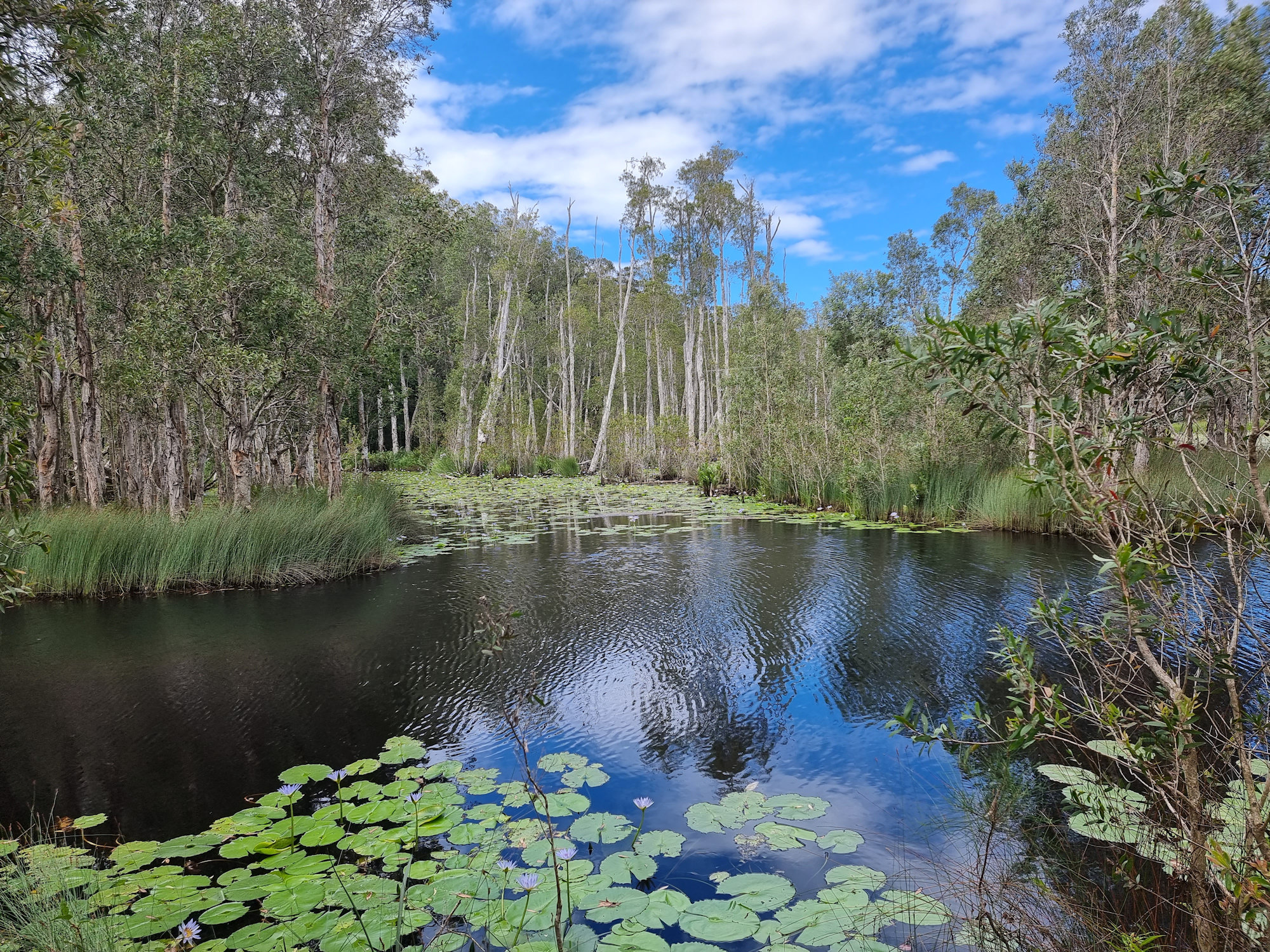Urunga Wetlands Boardwalk
The Urunga Wetlands and Boardwalk are the result of a ten million dollar project to rehabilitate an old mining processing plant. The result is a beautifully restored wetland and the containment of the tailings and their heavy metal content.
History of the Site
In 1969, Broken Hill Antimony Pty Ltd established an antimony processing plant on the site. Located at Hillside Drive, Urunga the processing plant extracted the heavy metal antimony from its ore, stibnite. After the ore was delivered to the site, it was crushed, and the antimony removed using complex chemical reagents and equipment.
Although the processing produced an estimated 400 tonnes of product, it generated 16,000 tonnes of waste. These waste tailings were rich in heavy metals including antimony, arsenic, lead and reagent residues of cyanide and cresylic acid. Poor management of the tailings resulted a spreading plume of waste contamination the surrounding wetlands.
Although sold to a private owner after closure in 1974, no clean-up or remediation work occurred.
A combination of soluble leachate and insoluble sediments impacted the wetland causing largescale die back of the swamp paperbark (Melaleuca quinquenervia) and damage to the habitat of the wetland for birds, plants and fish.
The Rehabilitation Process
The Environmental Protection Authority declared this a remediation site in in 2002 because of long-standing concerns by the community, environmentalists and Bellingen Shire Council. With the owner unable to fund the remediation work ownership of the site transferred to the NSW Government as Crown land. In 2011 a remediation order was placed on the site.
Around four hectares of land needed excavation. A total of 36,400 tonnes of contaminated soils and sediments required removal. Stockpiled and then treated with chemicals to stabilise it, the waste now sits in an engineered containment cell constructed on-site. Remediation resulted in a total of 224 tonnes of antimony, arsenic, lead and mercury removed from the environment.
Only a grassy mound now indicates where the containment cell is located, but beneath that surface is an engineered structure with 15 different layers.
The Site Today
If you were unaware of the site’s history, you might think the area had not required rehabilitation because it looks so amazing. The initial walk winds through replanted forest before reaching the wetlands. At this point a 150m boardwalk crosses the water, allowing you great views of the melaleuca forest on the far shore. Along the way, sedges, lilies and other wetland plants line the shores.
On the far side of the boardwalk the track continues completing a loop to the carpark. Along the 450m of walking track, information boards show the layout of the area, provide you the history of the site and show what wildlife you may see.
How to Get There
A carpark on Hillside Drive, Urunga has plenty of room. However, there are no facilities here apart from rubbish bins, so bring your own food and refreshments.
Swimming and Canoeing
Visitors should stay on the paths to avoid disturbing wildlife and allow the vegetation to establish. Although the water appears clean, traces of heavy metals are still present, so swimming and boating are not permitted.
What Did We Think?
We enjoyed the walk and were amazed how well the rehabilitation turned out. This was a great place to visit while we were in Urunga.









Our photos are available for purchase on
To see what else there is to do in New South Wales, please see some of our other stories.

Leave a Reply